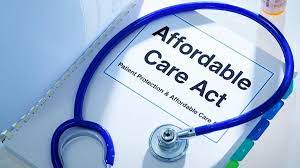If you need health insurance and aren’t covered by your job or your spouse’s plan, or you retire but are under 65 and not yet eligible for Medicare, it’s time to consider enrolling in a Plan of Care Affordable Health (ACA).
For the rest of 2022, the American Rescue Plan, which was enacted in March 2021, makes buying individual health insurance more affordable. The plan increases ACA marketplace premium subsidies and says no one will have to pay more than 8.5% of their income for ACA health insurance. There are proposals in Congress to make these changes permanent, but so far lawmakers have not acted.
Deciding which health insurance plan fits your health care needs and budget can be complicated—and daunting. Here’s a checklist of what you need to know about the ACA and the information you’ll need at your fingertips when making your health plan decisions.
Understanding ACA coverage
All ACA plans must cover the same set of essential health services, such as hospitalization services, doctor visits, diagnostic tests, emergency room care, and other vital services. All your pre-existing illnesses will be covered.
Plans available from private insurance companies are organized by categories named after metals. Each category has a different combination of premiums, deductibles, and copays to meet different health and financial needs.
Bronze:
- Lower monthly premiums
- Higher deductibles and copays
- Plans designed to cover you in the event of serious illness or injury
Silver:
- Most Popular Plan Category
- Moderate monthly premiums
- Moderate deductibles and copays
- Only plans in this category can receive cost-sharing subsidies
- Plans designed to trade a slightly higher monthly premium for more coverage for routine health care
Prayed:
- high monthly premiums
- Lower deductibles and copays
- Plans designed for people willing to trade higher monthly premiums for more coverage of routine health care costs
Platinum:
- Highest monthly premium
- Lower deductibles and copays
- Plans designed for those who need a lot of care and are willing to pay a very high premium.
What are ACA grants?
Premium Tax Credit
- This tax credit lowers the monthly premium for those who qualify. The amount you can receive depends on your income. For 2021 and 2022, federal law says you will never have to pay more than 8.5% of your income for an ACA premium.
- If you qualify for a premium subsidy—or tax credit—the federal government will pay the percentage of the tax credit that you can directly access to your health plan, and you’ll pay your share. Or, you can choose to pay the full premium and receive the tax credit when you file your taxes.
Cost Sharing Subsidy
- If you qualify for a premium tax credit, you may also qualify for a reduction in cost-sharing. This will help you pay out-of-pocket costs, such as deductibles and copays.
- You can get these savings only if you enroll in a Silver plan, and you’ll get a plan designed specifically for those who qualify for this extra financial help.
How can I get a subsidy?
- Your ability to receive a premium tax credit depends on the estimated household income you indicated on your application.
- This calculator from healthcare.gov will let you know if you can receive a subsidy and how much.
- When you figure your subsidy, be sure to include yourself, your spouse, and anyone else you claim as a dependent on your income taxes, even those who don’t need coverage.
Are you ready to apply? Gather personal information
- Your name and date of birth, your spouse’s, your children’s, any other dependents, and anyone else under age 21 who lives with you, even if they’re not applying for coverage.
- The email addresses of the people listed on your application
- The Social Security numbers of everyone on your application
- If someone is a legal permanent resident, you will be asked for information from immigration documents.
- Your tax information, including how you file taxes, the dependents you claim, and the income of anyone on your application for health coverage. Does anyone in your household have public or private health insurance? You will need their policy numbers.
- Your employer information, including whether you were offered coverage through your job or a family member’s job, and employer contact information for all employed household members
How and when to apply
- Visit healthcare.gov or your state’s marketplace to apply.
- The current special enrollment period lasts through August 15.
- Coverage takes effect on the first day of the month following your request. For example, if you apply before April 30, your coverage begins May 1. But if you apply on May 10, you’ll have to wait until June 1 for coverage to take effect.
- If a life-changing event occurs, such as losing health insurance through your employer or through your spouse, you can apply any time of the year.
- Typically, the ACA open enrollment period begins on November 1 and ends on December 15.
